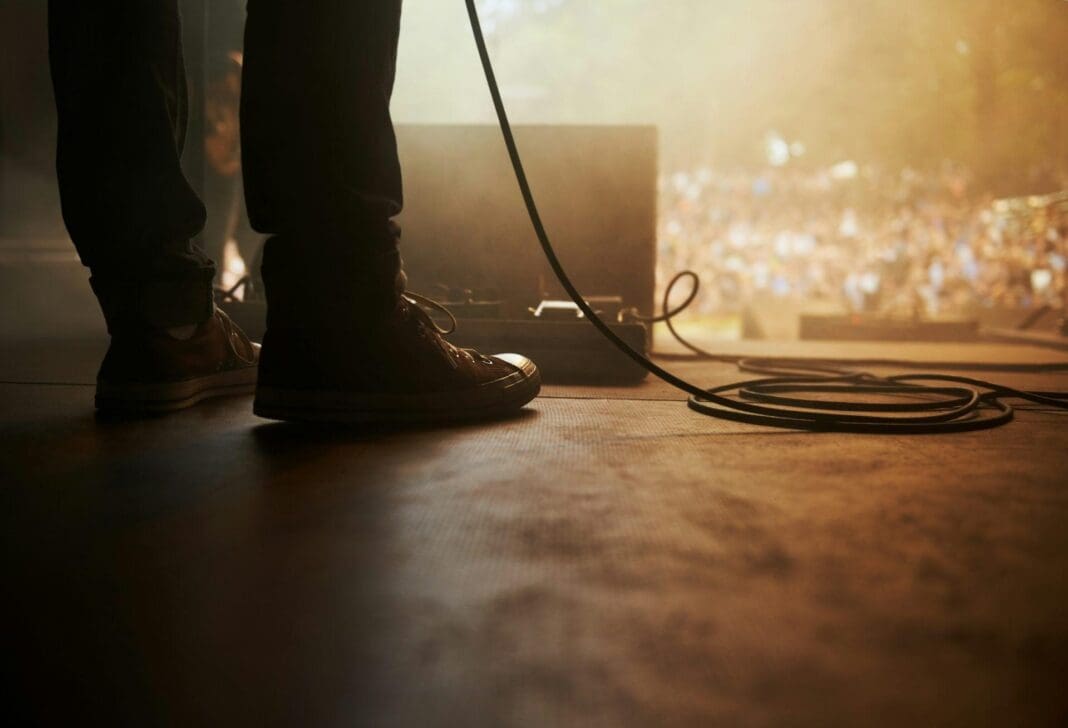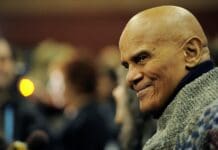I grew up playing in a lot of different bands, and my bandmates and I always held onto the belief that if we could just open for a more established act, it would pave the way to more success.
When I started playing in the indie pop band Passion Pit – a group known for its shimmering synths, energetic live shows and breakout hits like Sleepyhead and Take a Walk – we began gaining traction and soon had the chance to open for the British band Muse, in what would be our first arena shows.
Until then, we’d been headlining 3,000-capacity venues. Our label, management and booking team made it clear that this next step – playing in front of massive audiences – would catapult us to megastardom.
Reality was different. After playing our own packed shows where fans cheered and called for encores, we suddenly found ourselves in 15,000-capacity arenas, where it seemed like everyone was ignoring us: chatting among themselves, still getting to their seats or waiting in line for food and drinks.
It was a wake-up call. The transition from being a headliner at a smaller music venue to opener for a major act didn’t feel like a step forward. It felt like starting over.
Years later, as an academic studying the music industry, I found myself returning to this question: Does opening for a major act help an artist’s career?
There’s an assumption that it’s a golden ticket. But I’d seen plenty of openers, some incredibly talented, disappear from the spotlight soon after a tour ended. If touring is supposed to be a stepping stone to long-term success, why do so many promising acts fade into obscurity?
These questions became the basis for my most recent study. I wanted to see whether these high-profile opportunities deliver any benefits for a singer or band, or if they were more like a sugar high, providing little more than a brief boost in exposure.
Popular music is a US$28.6-billion global industry, and music consumption, according to a 2025 report from the International Federation of the Phonographic Industry, is at an all-time high. People around the world now spend an average of 20.7 hours per week listening to music on radio, streaming platforms, vinyl, CDs and social media.
The ease of listening to and recording music presents both an opportunity and a challenge for aspiring artists.
On one hand, streaming platforms such as Spotify and Apple Music have removed traditional gatekeepers, making it easier than ever to release music and reach a global audience. But these platforms have also saturated listeners with content, and discovery is dictated more by algorithms rather than by word-of-mouth buzz, local touring circuits or traditional artist development.
Social media, especially TikTok, can launch an unknown act into viral stardom within days. However, the attention span of digital audiences is fleeting. Most people consume music passively – often through playlists they didn’t curate and might not even remember.
In other words, getting heard has never been easier. Being recognized and staying relevant? That’s the real challenge.
For artists trying to break through, it’s no longer a question of choosing between touring or posting content. It’s about doing both, constantly, at a high level.
But while headlining tours are often seen as a marker of success, many emerging acts first step onto national stages as openers – raising the question, does opening for a major artist actually lead to meaningful career growth?
In my study, I analyzed the touring and streaming data of 57 opening acts on major U.S. tours in 2022 and 2023. For this project, “major” referred to nationally promoted, ticketed tours at venues with capacities of 2,000 or more, such as Harry Styles’ “Love On Tour,” Paramore’s spring arena run and Mitski’s “Laurel Hell Tour.” These tours drew large, dedicated fanbases – offering opening artists significant exposure.
Using platforms such as Pollstar, Songkick and Chartmetric, I tracked each artist’s listenership across Spotify four weeks before the tour, during the tour and four weeks after the tour. I also conducted surveys with 500 fans to better understand how people were discovering and engaging with openers.
The results were revealing. Most opening acts saw a streaming bump during the tour – usually between 18% and 20%, with some surging up to 200%.
But that momentum rarely held. Within weeks, streams often dropped by 6% to 10%, or returned to their pre-tour levels entirely. While a few artists managed to hold onto new listeners, most saw the gains quickly fade. And even when audiences enjoyed an opener’s set, their interest withered: They may have checked out a song or two after the show, but few became regular listeners.
These findings challenge the long-standing narrative that opening for a major artist is a surefire path to career growth. Exposure helps, but it’s not enough on its own. Without a clear post-tour strategy, that attention quickly fades.
I’m not trying to discourage aspiring bands from going on tour. Far from it. Touring remains a crucial part of building a fan base.
In a landscape defined by passive consumption, there’s still something powerful about the shared experience of live music. A performance can create an emotional connection that a stream simply can’t.
Today, discovery often starts with a playlist. Someone hears a song and maybe adds it to their rotation. But they rarely click to learn more about the artist. Listeners follow the playlist, not the person behind the music. Many acts land on major playlists and go on to generate tens of thousands of streams. Others will even go viral on social media. And they still can’t sell more than 25 tickets to a local show.
Live performances offer something different. A great set can turn a casual listener into a true fan. I’ve heard countless people say a particular show changed the way they experienced that artist’s music, that it left a lasting impression and forged a bond with the singer or group.
That kind of loyalty doesn’t come from an algorithm. It comes from being in the room. And with more than 100,000 tracks uploaded to streaming services each day, artists need to use every tool they can to stand out.
In an era when streaming revenue is notoriously slim, touring has become one of the few reliable sources of income for working artists. The top artists in 2017 earned 80% of their income from touring, 15% from recorded music and 5% from publishing fees.
Even though touring is far from a guarantee – especially if you’re not the headliner, as my research shows – it’s still one of the few ways left to cut through the noise. In the survey I ran for my study, 68% of concertgoers said they discovered at least one new artist through an opener, and 39% said the opener influenced their ticket purchase.
And there are success stories – instances where opening slots have helped launch lasting careers.
Billie Eilish opened for Florence + The Machine early on in her career, using that visibility to build a massive following. Taylor Swift, in particular, has a reputation for picking future stars: Justin Bieber, Ed Sheeran, Shawn Mendes, Sabrina Carpenter and Chappell Roan all opened for her before becoming major names.
These examples are outliers, of course. For most openers, visibility comes quickly but fades just as fast.
Today’s artists need more than one big moment. There needs to be some sort of plan, whether it’s releasing new content, crafting a strong identity or figuring out ways for new fans to stay engaged after the show ends.
Because at the end of the day, it’s not about being seen once. It’s all about being remembered.
This article is republished from The Conversation, a nonprofit, independent news organization bringing you facts and trustworthy analysis to help you make sense of our complex world. It was written by: Jeff Apruzzese, Drexel University
Read more: Why the US government is trying to break up Live Nation Entertainment – a music industry scholar explains As the US government and record labels go after TikTok, musicians get the squeeze What’s behind the magic of live music?
Jeff Apruzzese does not work for, consult, own shares in or receive funding from any company or organization that would benefit from this article, and has disclosed no relevant affiliations beyond their academic appointment.













